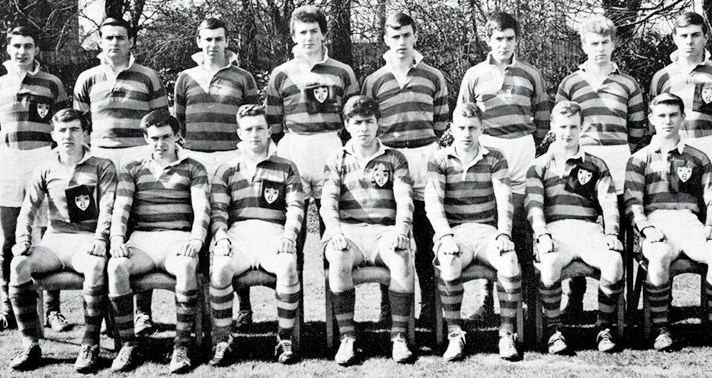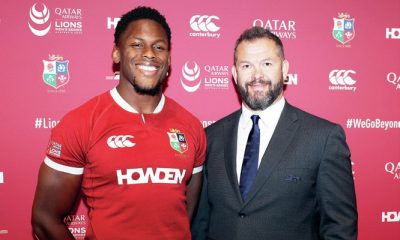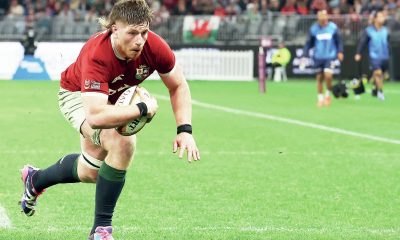
Brendan Gallagher continues his series looking at rugby’s great schools




IT takes something very special to become a noted Rugby Union outpost in football daft Liverpool but that’s what St Edward’s College achieved for the best part of 50 years after World War 2.
For decades they provided the backbone of the Lancashire schools side and, as with their great north west rivals Cowley HS, roamed the country looking to strengthen their fixture list, taking on the best Wales, Ireland and southern England could throw at them.
Their better-known players would be England wings Tedd Rudd and Mike Slemen – the latter equally well known as a cricketer during his time at the school – while Kyran Bracken learned his rugby at St Edward’s before moving to Stonyhurst. England B fly-half Ged Glynn was a mainstay in the mid 70s while a torrent of well-regarded Liverpool, Waterloo and Lancashire stalwarts such as John Henningan began their careers at the school.
At the Rosslyn Park Sevens they reached five finals between 1964 and 1980, winning three of them, and were almost always heavily involved at the sharp end on the final day in the knockout games. Predictably it was the Christian Brothers – also responsible for notable rugby schools at St Brendan’s, Bristol and De la Salle College – the latter in equally football mad Manchester – who ensured that St Edward’s played rugby not football. Their addiction to the game is well known.
School folklore insists, however, that St Edward’s rugby philosophy and style emerged only after the school was evacuated to Llanelli during World War 2. Everybody returned as rugby diehards and whatsmore they adopted mercurial West Walian ways, particularly behind the scrum.
St Edward’s were remarkably hard to beat throughout the 60s when Welshman JB Thomas -not to be confused with the Welsh rugby journalist – was the master in charge during which time they also gained their first Rosslyn Park title (1969) and within that golden era they enjoyed a spectacular purple patch going unbeaten for four seasons between 1961 and 1965.
In the first of those four triumphant years a young team was not expected to excel but they reeled off 18 straight wins with the powerful Rudd invariably taking the eye. Rudd was to win six senior England caps between 1965-66.
Rudd was again on fire the following season along with back row forward Anthony Brown who won England schools honours, but this time St Edward’s did have one small blemish on their record, a 3-3 draw against Wade Deacon School in Widnes.
Wade Deacons are not a school you hear mentioned much in Union circles these days but back in the 60s it was a hothouse of schoolboy rugby talent, albeit most of it eventually headed 1964-65 season after winning 20 of their 21 games.
This time it was against St Mary’s and the stern first XV report for that season in the school magazine pulled no punches, talking about complacency ahead of the match and the fact that it was poetic justice St Edward’s missed a last-minute conversion that would have seen them claim an undeserved 8-6 win rather than the 6-6 draw. Ouch!
The golden period ended the following season with five defeats, all rather unexpected as no fewer than 11 of the previous season’s outstanding starting first XV returned but that’s schools rugby for you. It’s not always about how quickly you are improving; the great unknown is how quickly the opposition develop.
Twelve months is an age when you are a teenager and, as many school masters and coaches have discovered, the very best seasons at first XV level often come when your star year group are in the Lower Sixth without exams to contend with.
St Edward’s remained a powerhouse school, though, always competitive and in 1969 came their first Rosslyn Park title, something they had had their eyes on since 1964 when they reached the final at their first attempt.
Sevens suited St Edward’s general rugby philosophy and their best season in that respect came in 1975 when they became the first school to complete the Rosslyn Park/Oxford Sevens double.
It’s hard to appreciate now but back then the Oxford tournament – contested over just one day at College grounds with the knockout stages at Iffley Road – was probably as prestigious as Rosslyn Park with some of the Welsh schools in particular targeting it.
Going into the tournament St Edward’s had lost six semi-finals at Oxford, but this time they marched to the final where they met local rivals King’s Macclesfield. A cracking game ensued with the score 12-12 at full time, requiring an extra period of play. St Edward’s speedster John Holian, obliged with the winner.
Next came Rosslyn Park where conditions were so wet and muddy that only the Rosslyn Park club ground was playable on the final day. There was a big onus on fitness and endurance and the draw was not kind to St Edward’s who had to negotiate a way past Ampleforth, Cwmtawe from Swansea and favourites Llandovery on the final day to book a place in the final against Methodist College Belfast, another mighty team.
It was a titanic arm wrestle but fly-half Glynn tiptoed through the mud for an outstanding individual score to clinch the title.
St Edward’s won the last of their Rosslyn Park titles four years later with an exceptional year group that had won the U16 Oxford tournament two years previously. Since then with the school becoming coeducational and putting even more emphasis on academics rugby has lost prominence.


International Rugby
Henry Slade pulls out of England’s tour of Argentina and the USA through injury

British and Irish Lions
British and Irish Lions told: Beware Australian dirty tricks

International Rugby
George Ford joins 100 club in England victory over Argentina



























You must be logged in to post a comment Login